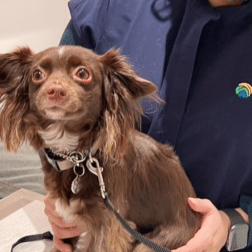Seasonal allergies for dogs might look something like this: After a pleasant spring day of admiring the cherry blossoms in Central Park, it is time for a good night’s rest. Your fluffy best friend jumps onto the base of the bed next to you. As you begin resting peacefully in the silence, you hear a scratch. The scratching comes and goes, enough not to bother you. Then, your dog begins licking their feet. You ask yourself if the licking and munching will ever stop. Your dog is very itchy and it is time for their sake, and yours, that you get to the bottom of this irritation. You couldn’t help but wonder: does my dog have allergies?
Scratching, licking, biting, and nibbling. All of these signs point to the first thing your veterinarian will want to rule out: allergies.
Allergies can be broken down into two primary categories:
- Environmental allergy, also known as ‘atopy’
- Food allergy
While both categories are important to know about, in this article we will focus on environmental allergies (atopy).
The diagnosis and management of allergic conditions in dogs is enough to fill a textbook (literally, it has been done). If your dog has allergies, it is crucial to discuss this with your veterinarian and know the options. The onset of environmental allergies typically occurs between 6 months and 7 years of age. Many breeds are over-represented, but ultimately no breeds are “safe”, including mixed breed dogs.










Conversation